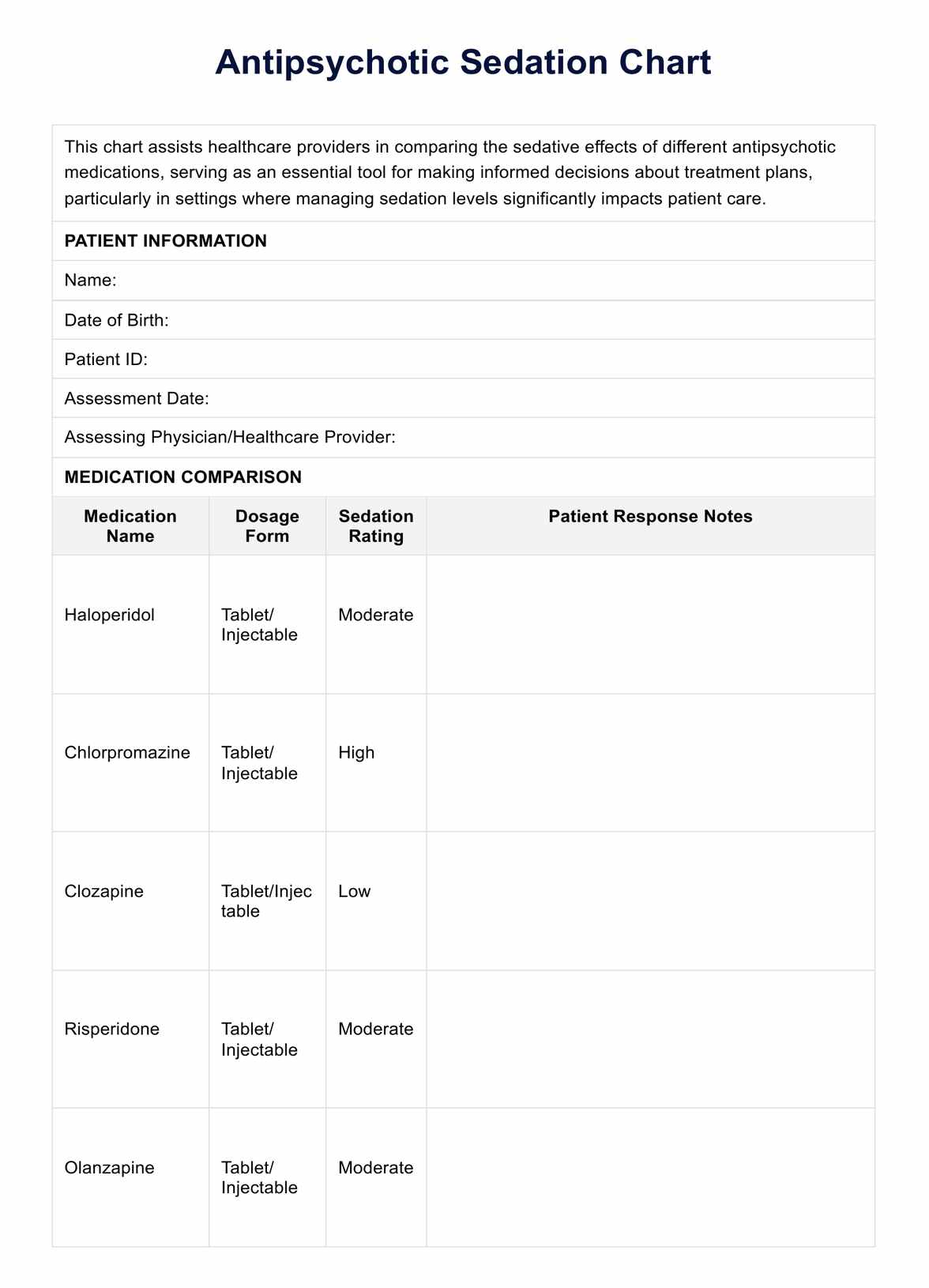Considerations include the patient’s age, overall health, treatment setting, potential for cognitive impairment, and the need for a sedative to manage their symptoms.

Antipsychotic Sedation Chart
Discover the essential functions of modern antipsychotic drugs, sedation charts, the benefits of medications, and how Carepatron enhances mental health treatment.
Antipsychotic Sedation Chart Template
Commonly asked questions
Sedation must be considered because it can significantly affect a patient's quality of life and daily functioning. Managing sedation is especially important in patients who need to maintain alertness for daily activities or those who may be at risk of falls or other injuries due to excessive sedation.
While the sedation chart is a valuable tool, it must be adapted or interpreted cautiously across different patient demographics, such as the elderly, children, or those with co-existing medical conditions, due to varying sensitivities and metabolic capacities.
EHR and practice management software
Get started for free
*No credit card required
Free
$0/usd
Unlimited clients
Telehealth
1GB of storage
Client portal text
Automated billing and online payments











